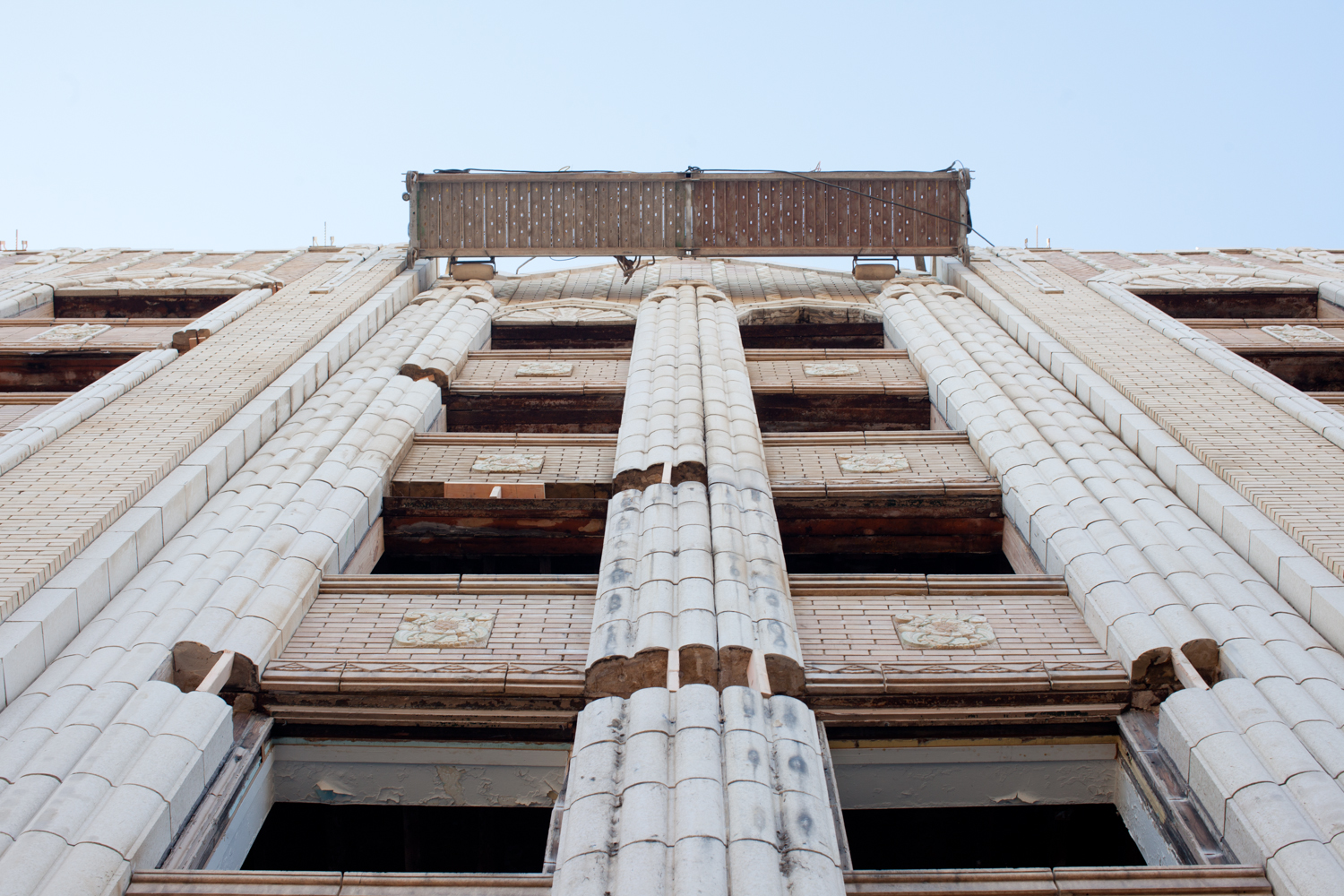What it took to rehab the Viceroy
By Robin Amer

What it took to rehab the Viceroy
By Robin Amer
The Viceroy Hotel had its problems long before the alderman was robbed.
Built in 1929, the hotel originally catered to middle class professionals who couldn’t afford their own two-flat. It was built in the dense, up-and-coming near West Side, with 175 tiny rooms and a view of Union Park. It was a beautiful example of Chicago’s many Art Deco terracotta buildings. A Chicago Daily Tribune editorial from the year it was erected praised the new building, saying the hotel would “add a dash of color to a district… daubed with grime put on by Old Father Time.”
But like the surrounding neighborhood the Viceroy fell on hard, then harder, times. You’d never recognize the building praised by the papers if you had seen the hotel just a few years ago.
“My house got robbed several Christmases ago, and the police came and they didn’t find anything,” Alderman Walter Burnett (27th) recalled. “Then somebody recognized the person who robbed my home. I jumped in the car, and I chased him right to the Viceroy Hotel.”
There, he saw some of the hotel’s down-and-out residents.
“There was a young lady who was on drugs, and there was a man who was pimping her,” the alderman said. “That was the type of characteristic of people who were in the Viceroy.”
In 2002, a young reporter named Mandy Burrell tried to spend the night at the Viceroy for a story. She was offered crack before she even walked in the door and could not bring herself to touch the furniture in her $38 room.
After looking at the stained and soiled comforter tattered by cigarette burns and other unidentifiable transgressions, [I’d decided] that we would not be lying or sitting on the bed that night. In fact, it didn’t seem wholesome to touch anything in the room. From the faded, pulled-up mess of a carpet to the showerless bathroom, with its filthy bathtub and mildewed grout, it seemed impossible that the room would pass muster on any state health inspection. Even the wood paneling on the TV set was gashed and burned by god knows what. And there was no way I’d ever use the threadbare towel or two Styrofoam cups resting upside down on the dresser.
Burrell barely made it past midnight. Later she called the Viceroy “the most depressing place I’d ever been,” although she admitted the real takeaway from her reporting was the stark contrast between her own privileged upbringing and that of the poverty-stricken tenants she encountered that night.
The Viceroy went out of business not too long after after that. Writing for WBEZ in 2011, Micah Maidenberg described the metal guards strapped across the windows of the vacant building.
But the Viceroy Hotel has gone through a second transformation: it’s no longer a shady SRO, but rather, a model of affordable housing.
Now called Harvest Commons, the old hotel was recently rehabbed by a coalition of community developers and neighborhood groups, including Heartland Housing and the nearby First Baptist Congregational Church.
At a recent talk on the project, Hume An, Heartland Housing’s Director of Real Estate, and architect Jeff Bone of Landon Bone Baker, explained their ambitions. The Viceroy was given city landmark status in 2010. But it wasn’t enough for An, Bone and company to merely save the building, with its intricate, molded plaster and sculpted terracotta tiles.
An says Heartland is “focused on affordable and permanent supportive housing.” That means it wants to serve the neediest residents: those living at below 60 percent of area medium income. According to An, that translates to about $31,000 a year.

The affordability piece of the Viceroy rehab is especially noteworthy as the city stands ready to lose other SROs, which, despite their reputation as fleabag motels, still provide cheap housing to people who might otherwise be homeless.
“We house those in most need,” An added.
That includes people who are formerly homeless, incarcerated, or, like one resident An described, living in a shelter.
“This is the first time in a long time he has his own kitchen and bathroom, and he’s loving the privacy,” An said.
Because Heartland’s other mission is to build projects that are environmentally sustainable, Harvest Commons was also built with a number of green components, including geothermal heating and cooling systems, a green roof, and an adjacent urban farm. The project received certification from Enterprise Green Communities, a LEEDS alternative which works specifically with affordable housing.
Of course, the greenest part of all was using the existing building, rather than tearing it down in favor of new construction. It came at a price, though: $260 per square foot compared to the estimated cost of similar new construction, $90-200 per square foot. These costs were subsidized mostly by the state, along with historic tax credits.
In the audio above, An and Bone explain why the cost was so high, and what it took to pull off the rehab and reconstruction. Bone begins by describing the process of “disassembling” the historic building.
Dynamic Range showcases hidden gems unearthed from Chicago Amplified’s vast archive of public events and appears on weekends. Hume An and Jeff Bone spoke at an event presented by the Chicago Architecture Foundation in May of 2013. Click here to hear the event in its entirety.
Photos courtesy of Shane Welch. Check out more of his excellent architectural photography here.
Robin Amer is a producer on WBEZ’s digital team. Follow her on Twitter @rsamer.
